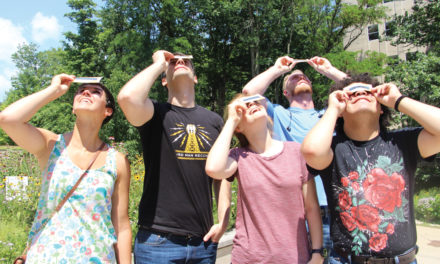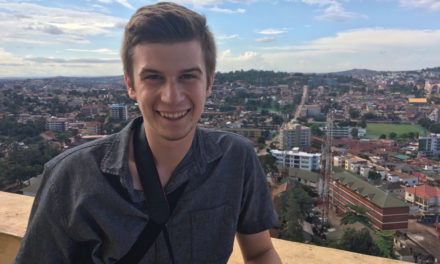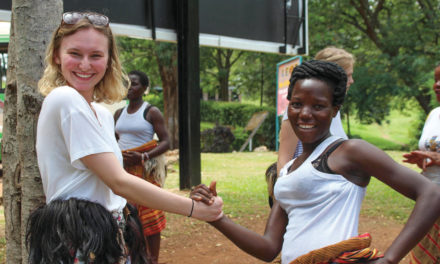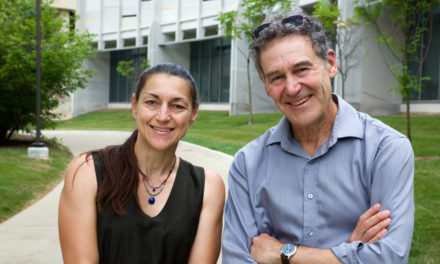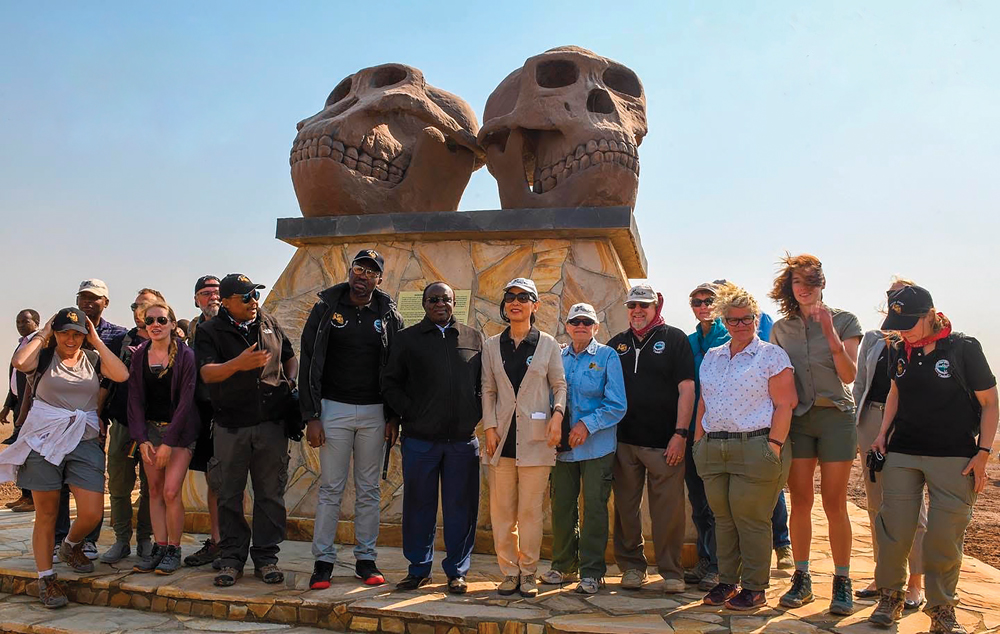
by PETER DORFMAN
Tourists to the East African nation of Tanzania, hurtling along the highway between the Ngorongoro Crater Conservation Area and Serengeti National Park, often rush past what is arguably the country’s most historically significant site: Olduvai Gorge, where the fossil remains of some of mankind’s earliest ancestors were discovered. Now, thanks to the founders of Bloomington’s Stone Age Institute, that site is a lot harder to miss.
The institute’s principal scientists designed and commissioned a distinctive educational monument at the turnoff to Olduvai Gorge, considered “The Cradle of Humankind.” The monument features two giant concrete skulls—each 6 feet tall and weighing 5,000 pounds. The skulls represent the two most famous contemporary hominin species, dating back 1.85 million years.
“The Tanzanian government asked us to partner with them to build a monument at the turnoff to Olduvai Gorge,” says Nicholas Toth, Stone Age Institute co-founder. “They wanted to bring more tourist traffic to the gorge and its museum.”
Even people who have heard of Olduvai have no idea there are guided tours of the gorge and the museum, which opened in the 1990s. The monument, funded by the Stone Age Institute and the John Templeton Foundation, has attracted considerable new attention to the site.
In July 2019, U.S. Chargé d’Affaires Inmi Patterson and Tanzanian Prime Minister Kassim Majaliwa travelled from the Tanzanian capital, Dar es Salaam, to dedicate the monument and celebrate the 60th anniversary of archaeologists Mary and Louis Leakey’s famous discovery of the skull of Paranthropus robustus—named Zinjanthropus, and found in Olduvai Gorge in 1959.
The new monument features Zinjanthropus alongside the larger-brained Homo habilis, a more direct ancestor of Homo erectus and, ultimately, Homo sapiens. Both Paranthropus robustus and Homo habilis were first found at Olduvai Gorge.
Festo Kijo, a prominent Tanzanian sculptor, fabricated the massive skulls using life-size casts provided by the Stone Age Institute. A plaque explains, in English and Swahili, the significance of the site.
The Stone Age Institute, headed by Toth and his wife, co-founder Kathy Schick, is an independent research center dedicated to the archaeological study of human origins and technological development, that has excavated at Olduvai since 2012. The institute has drilled to extract core samples from an ancient lake bed at Olduvai, harvesting two million years of continuous data about environmental conditions in the region.
For more information, visit stoneageinstitute.org.


